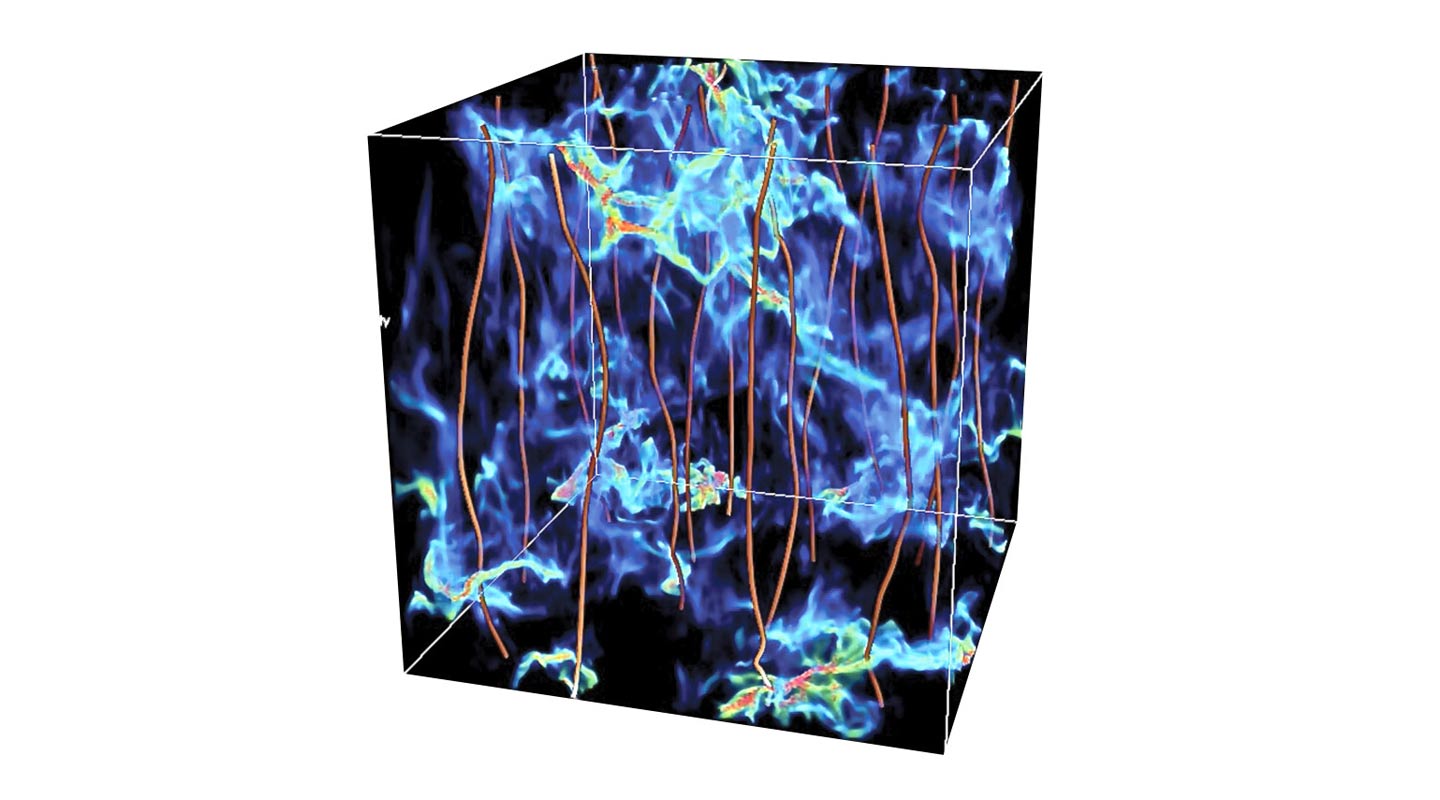Dear readers, With the launch of e-newsletter CUHK in Focus, CUHKUPDates has retired and this site will no longer be updated. To stay abreast of the University’s latest news, please go to https://focus.cuhk.edu.hk. Thank you.
Before a Star is Born
Hua-bai Li tries to get to the bottom of what makes the stars.

A group of astrophysicists at CUHK led by Prof. Hua-bai Li of the Department of Physics has found that the magnetic field plays a significant role in the formation of massive stars.
The universe is filled with gases and dusts which, when collapsing into sufficient density due to gravitational pull, form the celestial bodies such as our stars and planets. But there are other forces at work where stars are likely to be born. As Professor Li explains, turbulent cloud motions would disperse the gases while the magnetic field, or B-field in the astrophysicists’ parlance, would align the gas motion along the magnetic field lines because the particles themselves contain ions. The interplay of gravity, turbulence and B-field has long been a subject of rigorous research and debate among astrophysicists.
If gravitation is the sole determinant, the collapse of the gases would be a uniform free-fall into a core which would trigger off the first nuclear fusion. In theory, all the gases should be turned into stars during the free-fall time in the order of one million years. But empirical and statistical data have suggested otherwise. Only a small percentage of gas will eventually form stars.

Professor Li and his team examined the role B-field plays in the formation of massive stars. They chose to focus on NGC6334, also known as the Cat’s Paw Nebula, because the gas in this region has a total mass 200,000 times that of our sun and is a fertile ground for massive stars to sprout. Also, while its distance from the Earth is a staggering 5,500 lightyears away, in astronomical terms it is close enough for valid observations to be made.
Using data gathered at various observatories in Hawaii and the Antarctica, the team was able to map out NGC6334’s magnetic field structure at a range of different scales and examine its cloud fragmentation with ordered B-fields. At all the different scales, the same pattern emerged: the cloud forms itself into a flattened structure perpendicularly to the B-fields, and at the end of the structure, the gas contracts into clumps, slightly pinching the B-field lines.
The consistent pattern of gas fragmentation across all scales demonstrates the dominance of the B-fields in the region NGC6334. With the B-fields the primary ordering principle, gravity and turbulence come in to compete for second fiddle. If gravity prevails, the structure would be better defined and the star formation process will be more efficient. If turbulence prevails, the structure would be more tangled and theoretically it will take longer to form a star,
These findings were published in Nature (Li, Yuen, Otto, Leung et al., ‘Self-similar fragmentation regulated by magnetic fields in a region forming massive stars’, Nature, vol. 520, 23 April 2015, pp. 518–521).
The findings in NGC6334 were repeated in another study. Professor Li’s team zoomed in to study the star formation in the molecular clouds in the Triangulum Galaxy, also known as M33, and found the B-fields in these molecular clouds are ordered and aligned with the large-scale galactic B-fields.

Professor Li studied mathematics and physics in university in his native Taiwan and later obtained a doctorate in physics from Northwestern University. He came to teach at CUHK in 2013 and lead the star-dust journey in stellar nativity.
The team’s simulation of the interstellar dynamics has been greatly helped by the high-power computer at the Department of Physics with 1,500 CPU cores. Professor Li expects more data to come when a new B-field mapping instrument is built at the department and installed on the Atacama submillimeter telescopes in Chile.

This article was originally published in No. 478, Newsletter in May 2016.